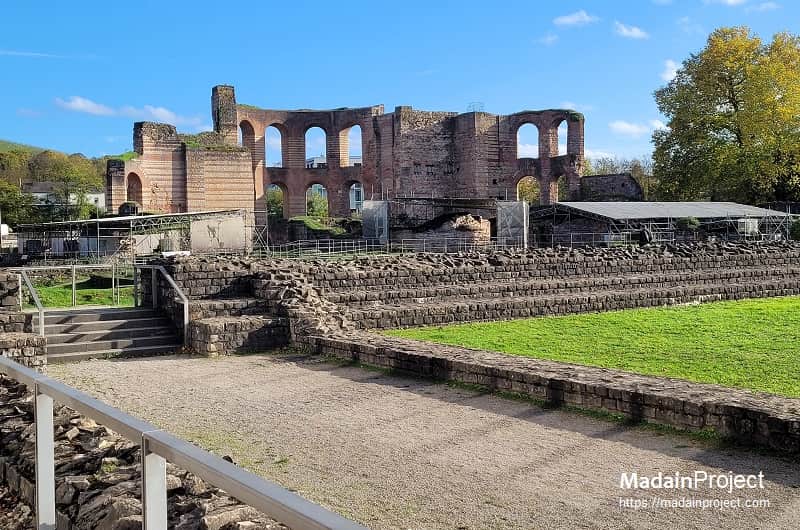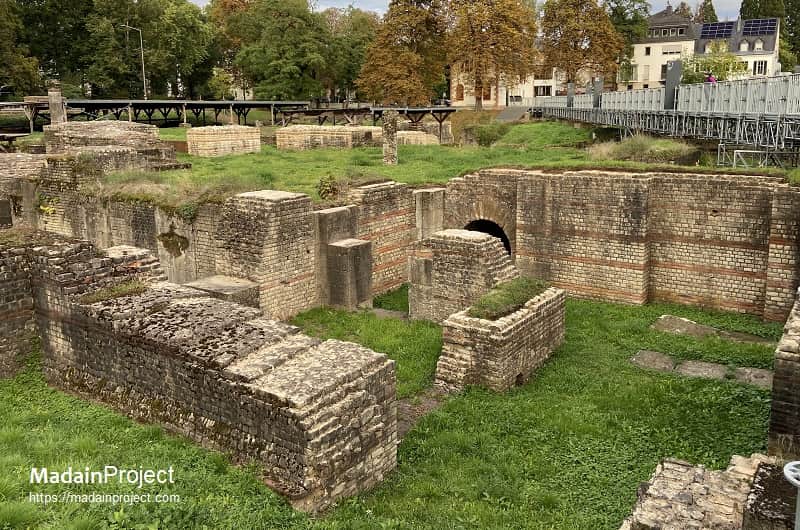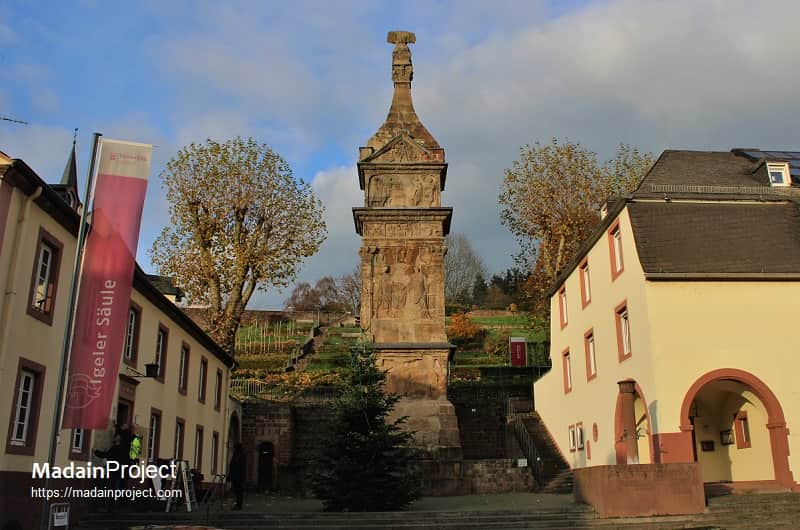The city of Trier, known in antiquity as Augusta Treverorum, was founded around 16 BCE during the reign of emperor Augustus and rapidly became one of the most important Roman settlements in the region of Gallia Belgica. Its location on the Moselle River provided both a strategic military position and access to trade networks across the Roman Empire. Trier functioned as a regional administrative and commercial center, housing a variety of civic, religious, and military structures. The city’s urban layout included a forum, basilica, amphitheater, and multiple bath complexes, all of which testify to its role as a provincial hub that mirrored the organization and cultural sophistication of larger Roman metropolises.
By the second and third centuries CE, Trier had attained the status of an imperial residence, particularly during the late imperial period, when emperors such as Constantius Chlorus and Constantine the Great used it as a political and military base. The city’s monumental architecture, including gates, bridges, and public buildings, demonstrated both practical administration and imperial ideology. Its fortifications, prominently including Porta Nigra, protected the city against potential incursions from Germanic tribes across the Rhine while also serving as a symbol of Roman order. Archaeological evidence from Trier, including inscriptions, coins, and urban infrastructure, provides insight into the city’s population, economy, and civic life, highlighting its importance within the northern provinces of the Roman Empire.
Trier, located in the Moselle Valley of modern-day Germany, is one of the oldest cities in the country, with origins dating back to the late Iron Age. Around the first century BCE, it was established by the Treveri, a Celtic-Germanic tribe, and was known as Augusta Treverorum following its formal incorporation into the Roman Empire circa 16 BCE. Under Roman rule, Trier quickly became an important administrative and economic hub in the province of Gallia Belgica, thanks to its strategic location along the Moselle River, connecting the city to key trade routes and the Rhine frontier.
By the third and fourth centuries CE, Trier rose to prominence as one of the principal cities of the Roman Empire north of the Alps. It served intermittently as an imperial residence for several emperors, and monumental structures such as the Porta Nigra, the Imperial Baths, and an extensive forum complex were constructed, reflecting the city’s administrative and military significance. Trier also became a center of early Christianity; the establishment of its bishopric in the fourth century contributed to the city’s spiritual and political influence in the late Roman period.
Following the decline of Roman authority in the fifth century CE, Trier experienced successive invasions by the Franks and other Germanic tribes. During the Middle Ages, the city retained importance as an ecclesiastical center under the Archbishopric of Trier, which wielded significant secular and religious power within the Holy Roman Empire. Its medieval architecture, including the Trier Cathedral and Romanesque churches, preserves a tangible connection to this period of religious and political influence.
In later centuries, Trier experienced cycles of conflict, particularly during the Thirty Years’ War and the Napoleonic era, when it changed hands multiple times. Despite these upheavals, Trier’s historic core and its Roman monuments remained remarkably intact, allowing the city to retain its identity as a bridge between ancient Roman heritage and medieval ecclesiastical authority. Today, Trier is recognized as a UNESCO World Heritage site, celebrated for its exceptional Roman remains and the continuity of urban life spanning over two millennia.

The Trier Imperial Baths (Kaiserthermen), a large Roman bath complex in Trier, Germany, were constructed in the early 4th century CE, during the reign of Constantine I. During that time, Trier was a major imperial hub, being a primary residence for Constantine's son Crispus. Read more

The Barbara Baths (Barbarathermen) was the largest Roman bath complex north of the Alps. Built in the second half of the 2nd century CE these baths were meant to meet the growing need for bathing in Trier when the Forum Baths became too small. Read more

The Igel Column is a multi-storeyed Roman sandstone column in the municipality of Igel, Trier, Germany, dated to circa 250 CE. The column is the burial or funerary monument of the Secundinii cloth merchant family, and was built by two of the family members, Lucius Secundinius Aventinus and Lucius Secundinus Securus. The bas-reliefs on the Roman imperial period column feature a procession of six coloni, bringing various donations to the house of their master. Read more
The Porta Nigra is the most prominent surviving Roman city gate north of the Alps, located in Trier, Germany. Constructed in the late second century CE from massive grey sandstone blocks, its weathered dark appearance inspired its modern name. The gate exemplifies Roman engineering excellence, combining defensive functionality with monumental urban symbolism. Serving both as a controlled entry point and a statement of imperial authority, Porta Nigra reflects Trier’s strategic significance as a provincial capital of Gallia Belgica and its proximity to the Rhine frontier. Over the centuries, it has been adapted for religious use, preserved through medieval modifications, and restored in the modern era
Signup for our monthly newsletter / online magazine.
No spam, we promise.